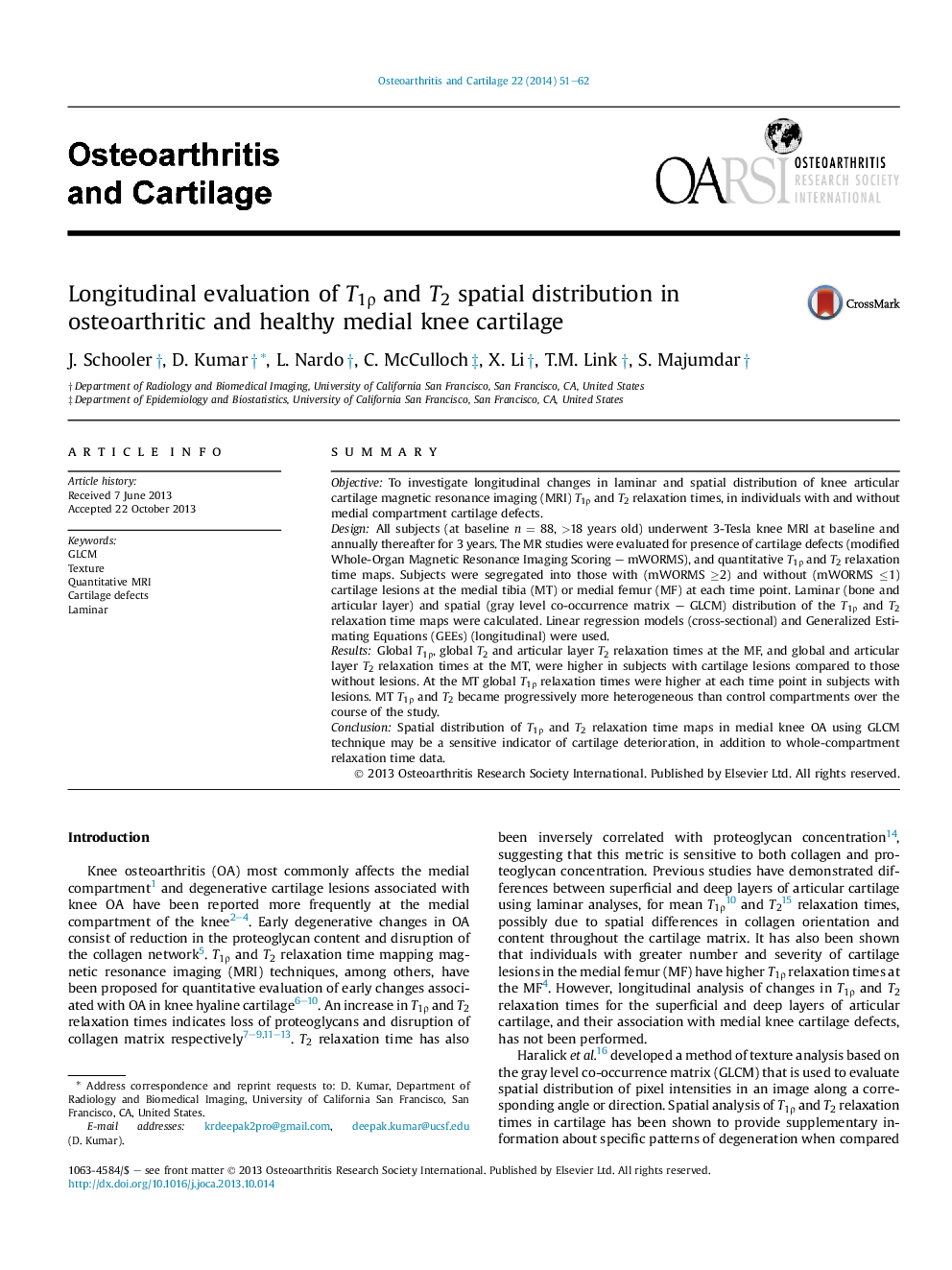| Article ID | Journal | Published Year | Pages | File Type |
|---|---|---|---|---|
| 3379394 | Osteoarthritis and Cartilage | 2014 | 12 Pages |
SummaryObjectiveTo investigate longitudinal changes in laminar and spatial distribution of knee articular cartilage magnetic resonance imaging (MRI) T1ρ and T2 relaxation times, in individuals with and without medial compartment cartilage defects.DesignAll subjects (at baseline n = 88, >18 years old) underwent 3-Tesla knee MRI at baseline and annually thereafter for 3 years. The MR studies were evaluated for presence of cartilage defects (modified Whole-Organ Magnetic Resonance Imaging Scoring – mWORMS), and quantitative T1ρ and T2 relaxation time maps. Subjects were segregated into those with (mWORMS ≥2) and without (mWORMS ≤1) cartilage lesions at the medial tibia (MT) or medial femur (MF) at each time point. Laminar (bone and articular layer) and spatial (gray level co-occurrence matrix – GLCM) distribution of the T1ρ and T2 relaxation time maps were calculated. Linear regression models (cross-sectional) and Generalized Estimating Equations (GEEs) (longitudinal) were used.ResultsGlobal T1ρ, global T2 and articular layer T2 relaxation times at the MF, and global and articular layer T2 relaxation times at the MT, were higher in subjects with cartilage lesions compared to those without lesions. At the MT global T1ρ relaxation times were higher at each time point in subjects with lesions. MT T1ρ and T2 became progressively more heterogeneous than control compartments over the course of the study.ConclusionSpatial distribution of T1ρ and T2 relaxation time maps in medial knee OA using GLCM technique may be a sensitive indicator of cartilage deterioration, in addition to whole-compartment relaxation time data.
